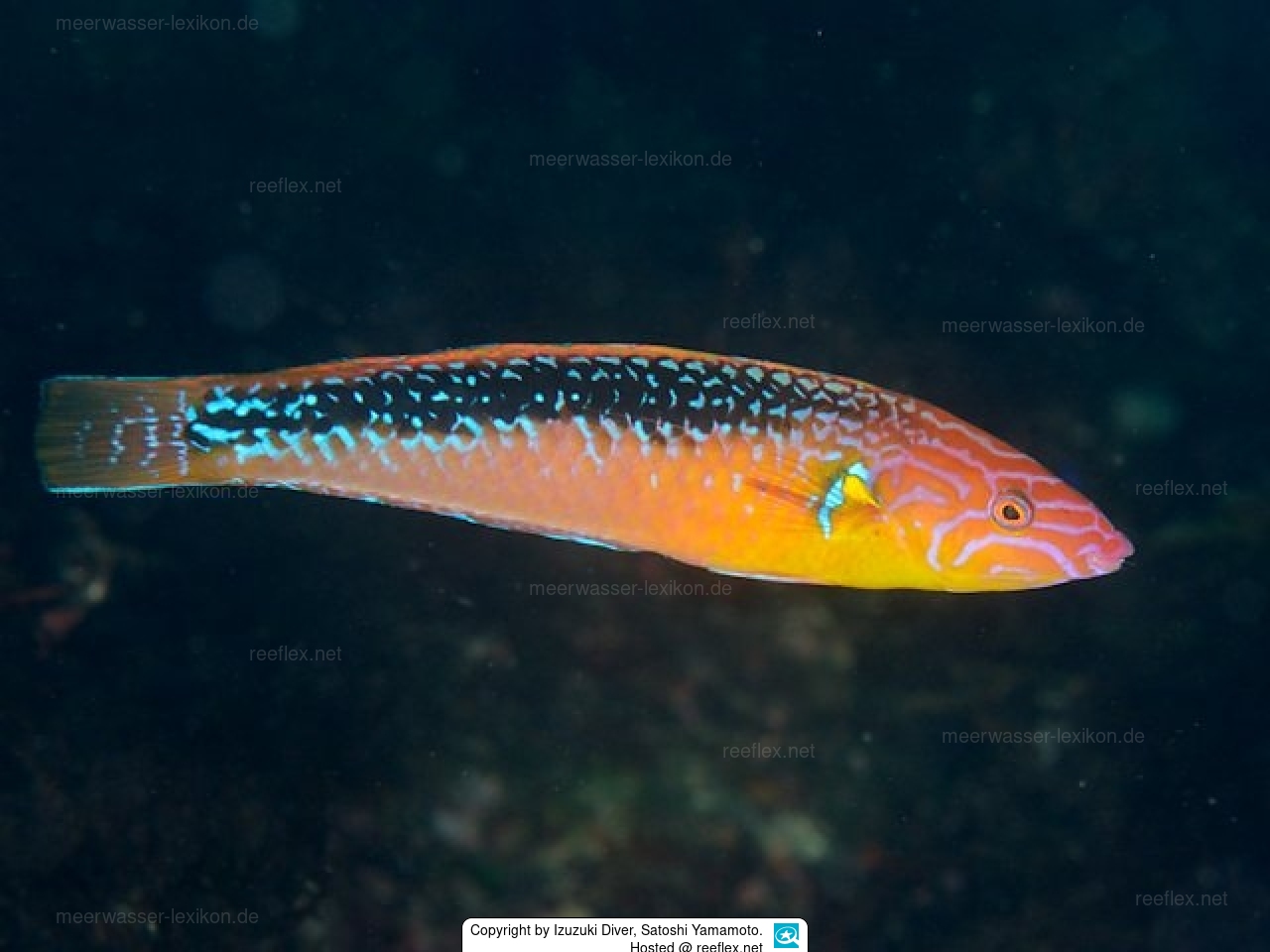Info
Ayling & Russell, 1977
Very special thanks for the first photo of Pseudojuloides elongatus to Dr. Douglass F. Hoese from the Australian Museum, Sydney amd to Izuzuki Diver,Japan.
Australia.
Pseudojuloides elongatus is known in Australia from the Houtman Abrolhos Islands to the Dampier Archipelago, Western Australia, and from Fingal Rocks, northern New South Wales to Sydney, Norfolk Island in the Tasman Sea, and northeastern New Zealand (Cape Reinga to Poor Knights Islands).
Also in southern Japan (Izu Islands), although this may be a new species. Found near weedy bottoms and kelp beds.
Source: http://www.iucnredlist.org/details/187480/0.
Classification: Biota > Animalia (Kingdom) > Chordata (Phylum) > Vertebrata (Subphylum) > Gnathostomata (Superclass) > Pisces (Superclass) > Actinopteri (Class) > Perciformes (Order) > Labroidei (Suborder) > Labridae (Family) > Pseudojuloides (Genus) > Pseudojuloides elongatus (Species)
Jumping guard
A jumping guard prevents (nocturnal) fish from jumping out.
Wrasses, blennies, hawkfishs and gobies jump out of an unprotected tank in fright if their night rest is disturbed, unfortunately these jumpers are found dried up in the morning on carpets, glass edges or later behind the tank.
https://www.korallenriff.de/en/article/1925_5_Jump_Protection_Solutions_for_Fish_in_the_Aquarium__5_Net_Covers.html
A small night light also helps, as it provides the fish with a means of orientation in the dark!
Very special thanks for the first photo of Pseudojuloides elongatus to Dr. Douglass F. Hoese from the Australian Museum, Sydney amd to Izuzuki Diver,Japan.
Australia.
Pseudojuloides elongatus is known in Australia from the Houtman Abrolhos Islands to the Dampier Archipelago, Western Australia, and from Fingal Rocks, northern New South Wales to Sydney, Norfolk Island in the Tasman Sea, and northeastern New Zealand (Cape Reinga to Poor Knights Islands).
Also in southern Japan (Izu Islands), although this may be a new species. Found near weedy bottoms and kelp beds.
Source: http://www.iucnredlist.org/details/187480/0.
Classification: Biota > Animalia (Kingdom) > Chordata (Phylum) > Vertebrata (Subphylum) > Gnathostomata (Superclass) > Pisces (Superclass) > Actinopteri (Class) > Perciformes (Order) > Labroidei (Suborder) > Labridae (Family) > Pseudojuloides (Genus) > Pseudojuloides elongatus (Species)
Jumping guard
A jumping guard prevents (nocturnal) fish from jumping out.
Wrasses, blennies, hawkfishs and gobies jump out of an unprotected tank in fright if their night rest is disturbed, unfortunately these jumpers are found dried up in the morning on carpets, glass edges or later behind the tank.
https://www.korallenriff.de/en/article/1925_5_Jump_Protection_Solutions_for_Fish_in_the_Aquarium__5_Net_Covers.html
A small night light also helps, as it provides the fish with a means of orientation in the dark!







 Izuzuki Diver, Satoshi Yamamoto, Japan
Izuzuki Diver, Satoshi Yamamoto, Japan
























